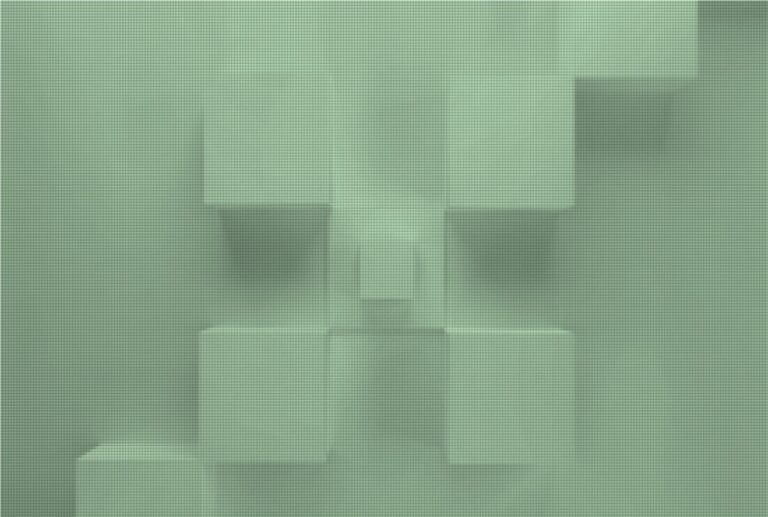When legal disputes arise, understanding the litigation process can make all the difference in the outcome of your case. For both natural and legal entities, knowing what to expect when filing a lawsuit in Serbia, can reduce uncertainty and help in the process of making an informed decision.
The Serbian litigation system, rooted in civil law tradition, has its own unique set of rules and procedures. In this blog, we’ve compiled a list of frequently asked questions and answers about the Serbian litigation process.
Whether you’re considering filing a lawsuit, facing a legal claim, or simply want to learn how the court system works, this Q&A will give you a practical overview of everything you need to know – from filing a lawsuit to enforcing a judgment.
The structure of the civil court system in Serbia
Following the provisions of the Constitution of the Republic of Serbia (hereinafter: the Constitution), and relevant provisions of the law, judicial power in Serbia belongs to the court of general, and special jurisdiction. Temporary, special, or extraordinary courts cannot be established. The establishment, organization, jurisdiction, arrangement and composition of court is regulated by the law.
Courts of general jurisdiction are organized in a hierarchical structure that include basic, higher, appellate courts, and the Supreme Court. On the other hand, due to the nature of the disputes, special jurisdiction courts are commercial courts, Commercial Appellate Court, Misdemeanour court, Misdemeanour Appellate Court and Administrative court.
Basic and higher courts serve as a first-instance courts, with key distinction being the value of the disputes they handle – higher courts have jurisdiction over cases where the revision can be filed (extraordinary legal remedy), which are all cases here the value of the dispute exceeds EUR 40.000 in RSD contra currency.
Based on the law that regulates the organization of courts, higher courts serve as a first-instance courts for special disputes, such as those related to the infringement of IP rights, establishing paternity and maternity status, and ones related to the protection against discrimination and harassment at work.
However, in most cases, higher courts hear appeals against decisions made by the basic courts, whereas appellate courts review appeals against judgments issued by higher courts. The Supreme Court address extraordinary legal remedies in both commercial, and non-commercial disputes.
When it comes to the special jurisdiction courts relevant solely to the litigation process, the systematization is the following:
- Commercial courts act as a first-instance courts for commercial disputes. Commercial disputes are typically the ones involving two business entities.
- Appeals against decisions made by commercial courts are decided by the Commercial Appellate Court, which is constituted for the territory of Serbia.
Additionally, established by the Constitution, the Constitutional Court plays a crucial role in safeguarding constitutional rights by ruling on constitutional appeals. These appeals challenge final decisions that are alleged to infringe upon rights guaranteed by the Constitution.
How is the court composed?
Bearing in mind that Serbia is a civil law country, the court is composed by the professional judges. The rule, set in The Civil Procedure Act (hereinafter: the Act), is that first-instance courts rule in the trial chamber, unless different is stipulated by the Act. However, in practice, most first-instance cases are ruled by the single professional judge. In second-instance courts, three professional judges form a trial chamber. The same number of professional judges constitute the trial chamber of the Supreme Court.
The jury, in the form as in common-law countries itself, does not exist. In other words, the jury does not have the same role and effect in the Serbian civil law system, as in some common-law countries.
However, Serbian system recognizes a special institute, called lay judge, which rule in trial chamber, together with professional judges. Lay judges are not professional judges, but citizens who are appointed by the High Council of Judiciary. In special proceedings, such as family disputes, lay judges are chosen from the ranks of professionals who have experience in working with children, due to the children’s best interest as imperative in these proceedings.
Even if the court is ruling in the trial chamber, where lay judges are included, the professional judge always has the role of the president of the trial chamber.
What role do judges play in the proceedings?
One of the fundamental principles of civil litigation is that the parties involved are required to present all the facts on which they base their claims and to propose evidence to support those facts.
Consequently, the court will only consider the facts presented by the parties and will only examine the evidence they propose. In other words, the court’s decision is confined to the scope of the claims made during the proceedings. This means that the process of gathering evidence and establishing the factual and legal basis of the case largely depends on the proposals of the litigating parties. The judge’s role is to manage the proceedings and rule on each specific proposal for the presentation of evidence.
However, in certain proceedings, such as family law disputes, the court has broader powers due to the principle of the child’s best interests. In such cases, the court is legally empowered to establish facts that the parties do not dispute and to independently investigate facts that have not been presented by either party.
Are there any formalities before initiating the proceeding?
There are no obligatory steps that each party should undertake before filing a lawsuit. The situation is somewhat different if one intends to file a lawsuit against the Republic of Serbia. In that case, the party may first try to resolve the dispute amicably. With that in mind, the party can contact the Public Attorney’s Office with a proposal for amicable dispute resolution. In case the Public Attorney rejects the proposal or fails to respond within 60 days from the date of submitting the proposal, which is also considered as rejection, the party can initiate the proceeding before the competent court.
Do interim measures exist in Serbian civil litigation?
Interim measures can be granted at any stage of legal proceedings — before, during, or after a court or administrative proceeding. These measures are designed to protect a party’s rights and prevent irreparable harm, and can be used accordingly in any stage, even before commencing the proceeding.
There are two main categories of interim measures:
- those aimed at securing monetary claims and
- those intended to safeguard non-monetary claims.
In the proposal for granting the (pre)interim measure, it is important to define the type of the measure (monetary, or non-monetary), and for how long it should last. On the other hand, apart from defining the abovementioned, in the proposal for interim measure exclusively, the claimant must define the means and object by which it is executed. If all mandatory elements of the proposal are not stated, the proposal shall be immediately rejected, without receiving an additional deadline for amendments.
These interim measures serve as essential tools for claimants seeking to protect their interests before the final resolution of the case.
Are there any deadlines for filing different types of lawsuits in civil court?
The time limits for filing civil lawsuits vary depending on the type of dispute. Generally, the statute of limitations for most claims is 10 years. However, there are notable exceptions. Some of them are:
- Contractual claims between businesses related to the sale of goods or provision of services expire 3 years after each individual delivery of goods or services.
- Claims for damages must be filed within 3 years from the date the claimant becomes aware of the damage and the party responsible for it. Regardless of this knowledge, the absolute limitation is 5 years from the date the damage occurred.
These limitation periods are established by relevant law and cannot be modified by an agreement between the parties. The period begins on the day the claimant is entitled to demand fulfilment of an obligation, i.e. when the obligation is due. Filing a claim by the creditor or acknowledging a debt by the debtor interrupts the limitation period, causing it to reset and start anew.
Additional exemptions are claims related to the unlawfulness of employment termination, which must be filed within 60 days of the date of receipt of the decision about the termination.
Once a claim becomes time-barred, it can no longer be enforced in court. However, the most important fact to have in mind is that courts do not recognize the statute of limitations on their own initiative — it must be raised as an objection by the opposing party.
In other words, courts will not automatically reject a time-barred claim. Instead, the party being sued (the opposing party) must actively raise the objection that the claim is time-barred. If the opposing party fails to raise the statute of limitations as a defense, the court may still proceed with the case and enforce the claim, even if the deadline has passed.
An exception to this rule applies to employment disputes, where the court is obliged to ex officio ensure that the preclusive deadline has been observed, meaning that the lawsuit was filed within 60 days of the date of receipt of the decision about the termination or from the date of knowledge of the violation of rights.
Is there an obligation to secure litigation costs?
In principle, there is no such obligation, except in one specific situation – when the plaintiff is a foreign national or a stateless person who does not have residence in Serbia. In such cases, the defendant has the right to request that the court in Serbia obliges the plaintiff to secure litigation costs in advance.
The defendant must submit the request for securing litigation costs no later than at the preparatory hearing, or, if no preparatory hearing is held, at the first hearing for the main hearing, before discussing the main case, or as soon as they become aware of the grounds for requesting the security.
The security for litigation costs is typically provided in cash, but the court may approve other suitable forms of security.
The defendant is not entitled to request the security for litigation costs in certain situations, including cases involving the plaintiff’s rights arising from employment in Serbia, divorce proceedings, or when the plaintiff holds the citizenship of a country where Serbian citizens, being plaintiffs, are not required to provide such security.
How are civil proceedings commenced?
Civil proceedings are initiated by filing a lawsuit with the competent court, and the process begins once the defendant is served with the lawsuit. The filing can be done directly to the competent court, or by the postal service. Electronic submission of lawsuits and other submissions in civil proceedings is also possible by the law, however, since digitalization is still on its first stage, it is not advisable to do it if the lawsuit is related to the preclusive deadline.
The plaintiff is informed that the lawsuit has been received by the court upon receiving a notice, in a form of a stamp, while the defendant is notified by the court through the delivery of the lawsuit and supporting documents, along with instructions regarding their rights and obligations in relation to the case.
The deemed date of service is the date on which the recipient actually receives the document. If personal receipt is required and the addressee is unavailable at the provided address, a courier will leave a notice indicating that the document can be collected from the court within 30 days of the attempted delivery. In such cases, a copy of the document will be posted on the court’s noticeboard. The document is considered delivered 30 days after the attempted delivery date.
If the party resides abroad, they must designate a representative to receive the documents in the proceeding. If no representative is appointed, the court will assign one. Service of court documents outside Serbia is carried out through diplomatic channels.
Are there any main elements of the lawsuit, and can it be amended after submission?
The lawsuit must meet certain formal requirements defined by the Act – specific claim regarding the main subject matter, and other demands, the facts on which the plaintiff bases the claim, the evidence supporting those facts, the value of the dispute, the designation of the court, as well as the names of parties, their residences or registered addresses, and the signature. It is not mandatory to define the legal ground for filing a lawsuit, because the court is not bound by the legal ground, even if one is stated.
After initial filing, the plaintiff’s claim can be amended by the end of the main hearing. An amendment of a lawsuit involves changing the identity of the claim, increasing an existing claim, or adding a new claim alongside the original one.
Different procedural rules apply depending on when the plaintiff decides to amend the claim. If the amendment occurs after the lawsuit has been served on the defendant, the defendant’s consent is required. On the other hand, if the amendment is made before the lawsuit is served, no such consent is needed.
However, if the defendant refuses to consent to the amendment after receiving the lawsuit, the court may still allow it. This is possible if the court finds that the amendment would contribute to the final resolution of the dispute and that it would not significantly prolong the proceedings.
Overview of civil court proceedings phases
While each type of proceeding may have its specific rules, depending on the dispute and individual circumstances of each case, the general process for civil litigations follows a standard structure. Here’s simplified overview of the key steps:
1. Filing the lawsuit: The plaintiff submits a lawsuit to the competent court.
2. Formal review of the lawsuit: The court checks the lawsuit for formal correctness. If the lawsuit meets the formal requirements, it is accepted for further processing.
3. Delivery to the defendant: The lawsuit is served on the defendant, who has 30 days to submit a response. There are certain types of procedure where this part is not mandatory. In those cases, immediately after formal review of the lawsuit, the court scheduled the preparatory hearing.
4. Preparatory hearing: After receiving the defendant ‘s reply, the court schedules a preparatory hearing, usually within 30 days. However, hearings can be rescheduled multiple times, which often leads to delays in the process.
5. Main hearing(s): The court holds one or more main hearings where both parties present evidence, call witnesses, and make legal arguments. Written submissions can also be exchanged between hearings, with the deadline that each submission must be submitted at least 15 days before the hearing, so that opposing party can receive it, and prepare the response.
6. Conclusion of the main hearing: Once all evidence is presented and arguments are heard, and the court believes that every important aspect has been analysed, the hearing is formally closed by the court’s decision.
7. First-instance decision: The court prepares a written decision within 8 or additional 15 days after the conclusion of the main hearing, following the Law. However, in practice, judges adhere to deadlines set by their internal rulebooks, which typically require a written decision to be issued within 30 days. For complex cases, judges are obliged to prepare the written decision within 60 days. In practice, the aforementioned 30-day deadline is generally observed.
8. Appeal: If a party is dissatisfied with the first-instance decision, they may file an appeal within 15 days (or 8 days, depending on the type of the proceeding), of receiving the written judgment. The opposing party has the right to submit a response to the appeal within the same time frame, although this is optional.
In case the appeal is submitted, the judgment cannot come into force, i.e., become effective. In other words, the appeal has suspensive effect.
9. Second-instance proceeding: The appeal, response, and full case file are sent to the higher court, which is required to render a decision within 9 months. In most cases, the second-instance court rules on the matter without holding a hearing.
10. Outcome of the second-instance decision: The outcome and further legal status depends on the type of the decision the second-instance court enacts. If the second-instance court upholds the first-instance decision, the ruling becomes final. On the other hand, if the second-instance court overturns the decision, it may either make its own final ruling or return the case to the first-instance court for retrial.
11. Extraordinary legal remedies: In certain cases, parties may have access to extraordinary legal remedies. However, these remedies do not suspend the enforcement of the court’s decision.
This process is designed to ensure procedural fairness, but delays often arise due to case backlogs, limited court resources, and the possibility of rescheduling hearings multiple times.
Furthermore, it is important to mention that proceedings in Serbia are in general, public. The court rules in each case on behalf of the people in Serbia, and judgments are enacted in the name of the people.
As with any other rule, the rule of public hearings has exemptions. The public is excluded from some proceedings by force of law, due to the sensitivity of the participants, such as family proceedings. However, in other civil proceedings, the court may exclude the public from all, or part of a hearing, to protect national security, public order, morals, or the privacy of minors and participants, particularly if legal measures to maintain order are insufficient.
Evidence in civil proceedings
Each party has an obligation to support its claims with proper evidence. Parties can request key evidence from each other, or from third parties. If a party claims the other holds a crucial document, the court may order its submission unless it contains privileged information. If the opposing party denies possession, the court may investigate to locate it.
The basic principle is that the court generally decides on the lawsuit based on oral, direct, and public hearings, and must allow each party to comment on the claims, proposals, and arguments of the opposing side. Considering the previous obligation that parties must provide specific proposals for evidence to support their claims, the final decision on whether a particular piece of evidence will be presented rests with the court.
Evidence is mostly presented through witness testimony, expert witnesses’ opinions, and documents.
Similar to other legal systems, the Serbian legal system protects certain privileged information, including confidential communications with lawyers, doctors, and religious confessors. Both witnesses and parties may refuse to disclose evidence that could expose them or their close family members to legal liability. Unlike external legal counsel, advice from in-house lawyers is not privileged, although company representatives can refuse to testify about internal company discussions.
Types of judgments
There are various types of rulings in civil proceedings:
- Partial ruling: Issued when only some of the claims in a case are ready for judgment.
- Interim ruling: Made when the defendant contests both the grounds and the amount of the claim, and the court decides to rule on the grounds first for practical reasons.
- Ruling based on confession: Issued when the defendant acknowledges the claim.
- Ruling based on renunciation: Made if the plaintiff withdraws the claim before the main hearing concludes.
- Ruling based on failure to respond: Issued if the defendant fails to submit a response to the claim, subject to specific conditions.
- Ruling based on defendant’s absence: Issued if the defendant fails to appear or participate in the hearing and does not contest the claim, with additional requirements.
- Additional ruling: Issued when the court fails to address part of a claim or multiple claims in the case.
- Court settlement: A resolution reached when both parties agree to settle before the court.
Can parties use any legal remedies?
A first-instance court ruling can be appealed within 15 days (in some specific cases 8 days), of receiving the ruling on the following grounds:
- Severe violation of civil procedure rules (e.g., a party was not allowed to present its case, the court lacked jurisdiction, or the party was denied the right to use its own language).
- Erroneous or incomplete determination of the facts of the case.
- Incorrect application of substantive law (e.g., failure to apply the correct legal provision or applying the wrong one).
On the other hand, extraordinary legal remedies available for challenging final and binding court judgments include:
- Revision (within 30 days of receiving the final ruling, if the dispute value exceeds EUR 40.000 RSD contra currency).
- Request for review of the final judgment (only available to the Republic Public Prosecutor).
- Request for retrial (e.g., if a party was denied the opportunity to present its case, the ruling was based on false testimony or counterfeit documents, or new facts come to light).
What are the costs of civil proceedings in Serbia?
In a civil procedure, the costs include court fees (determined by the court tariff), legal fees (usually based on the official attorneys’ tariff, although actual fees may exceed this), witness travel expenses, lost wages for witnesses and experts, costs for expert opinions, and other related expenses. However, the court only considers costs that are deemed necessary for the conduct of the proceedings.
Each party initially bears its own costs and those incurred due to its actions. The general rule is that the losing party is required to reimburse the other party’s costs. If a party partially succeeds in the case or based on the reasons of equity, the court may order each party to bear its own costs or divide them proportionally.
How can judgment be enforced?
Once the domestic judgment becomes final and binding, a plaintiff can initiate an enforcement procedure. There must exist the enforcement motion, but the collection can be carried out by either the court or a bailiff.
The procedure of enforcement of foreign judgment (issued by foreign court, or authorities whose decisions have same legal strength as the ones issued by courts), is somewhat different. For a foreign court ruling to be enforced in Serbia, the precondition is for it to be recognized by Serbian courts. The foreign judgment must be final, binding, and enforceable under the laws of the country of origin, and there must be reciprocity between Serbia and the foreign country. Serbian courts may refuse recognition of a foreign ruling if:
- it contradicts Serbia’s public order, stipulated by the Constitution;
- it involves a matter under exclusive domestic jurisdiction, except in matrimonial disputes if the defendant does not object;
- the party against whom the decision was made did not participate in the proceedings due to procedural irregularities;
- involves a matter already resolved by a final and binding decision between the same parties, either in Serbia or in another foreign country, which was recognized;
- reciprocity does not exist;
- there is an ongoing procedure in Serbian courts concerning the same issue, between same parties, in which case the recognition process will be suspended.
























